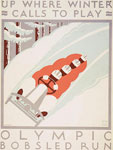Arlington Historical Society, Knapp History Park, and Museum [TX]
The Arlington Historical Society seeks to preserve and share the history of Arlington, TX, and its people. To this end, the society operates the Knapp Historical Park and a local history museum within the 1914 Fielder House. Exhibits include barbershop and general store settings and a reconstruction of a steam engine. The Knapp Park contains two mid-19th-century cabins and a circa 1910 one-room schoolhouse.
The society offers tours of the museum and of the Knapp Historical Park. The park welcomes school tours.
